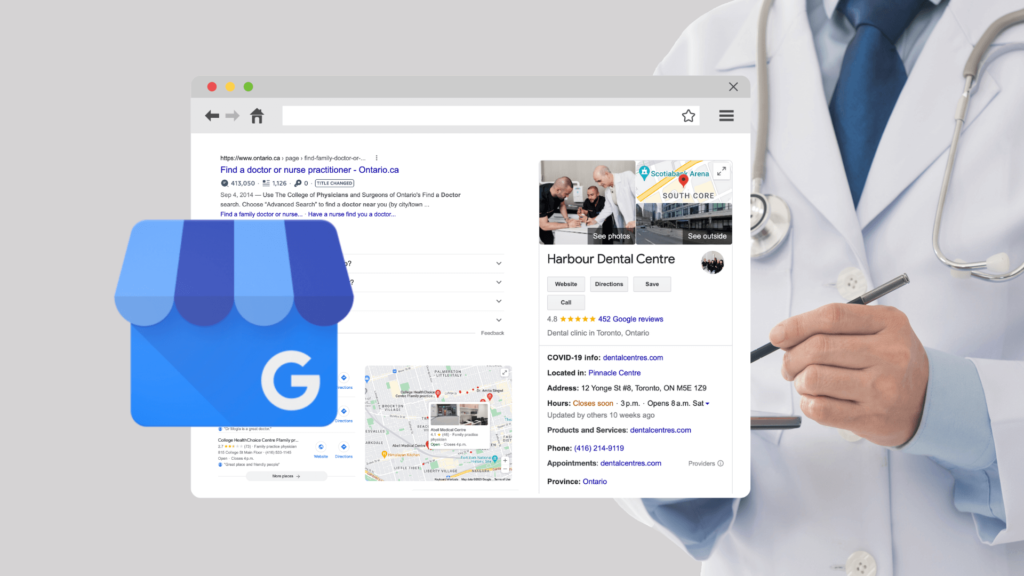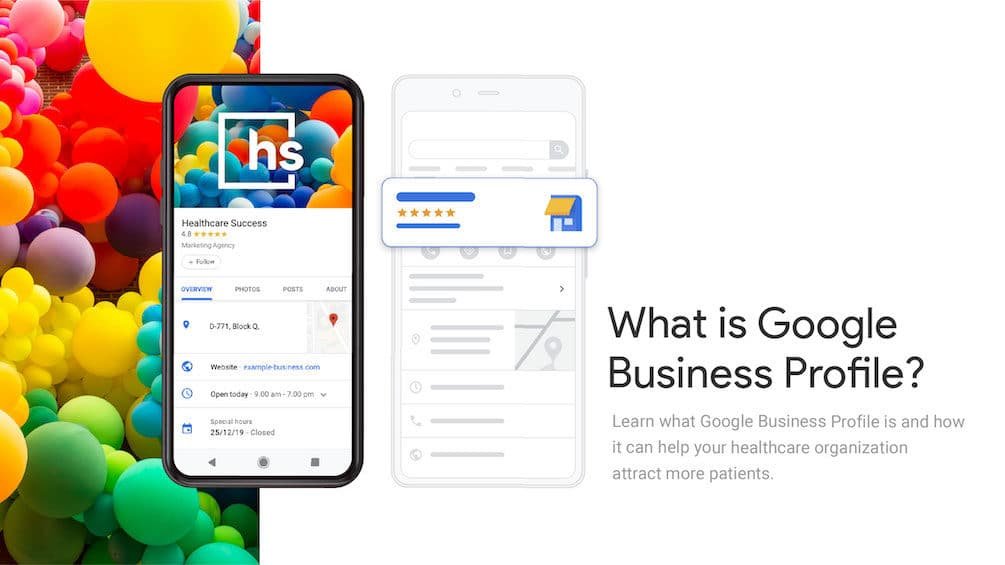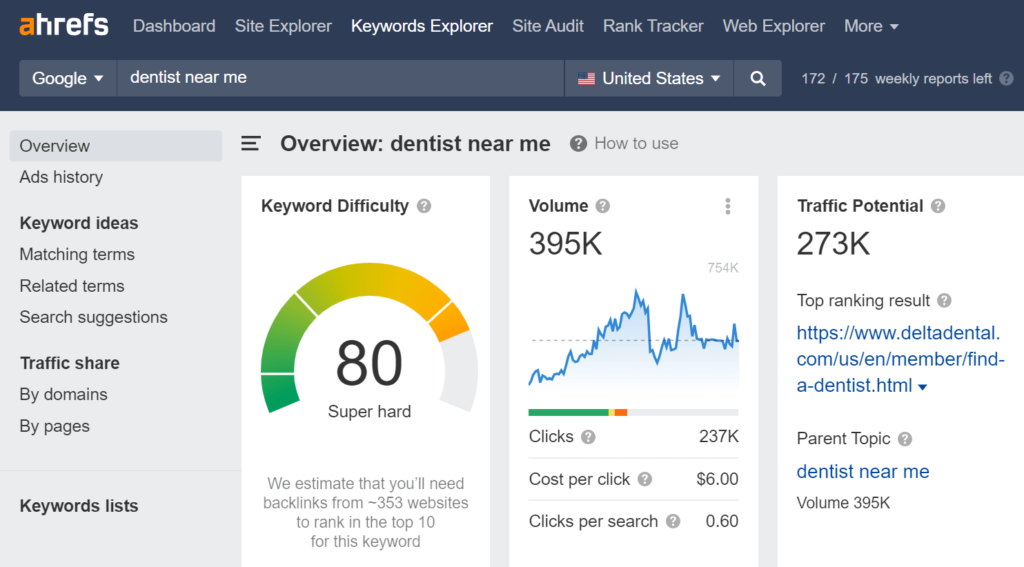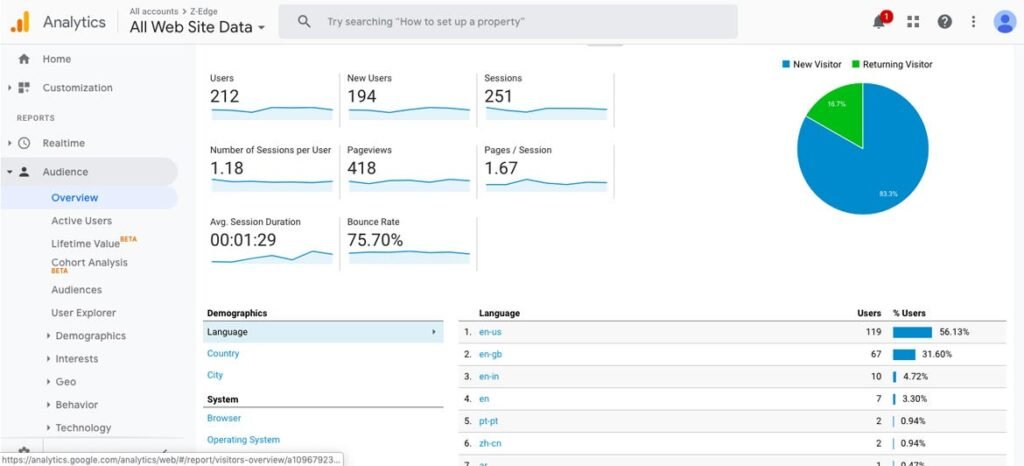Introduction to SEO for Doctors
Why SEO for Doctors is Crucial for Healthcare Professionals
In 2025, the healthcare landscape is more competitive than ever, and visibility online is the name of the game. Patients are no longer flipping through the Yellow Pages—they’re Googling phrases like “best dermatologist near me” or “family doctor in [city].” If your practice isn’t showing up on page one, you might as well not exist in the eyes of a potential patient.
This is exactly where SEO for doctors becomes a game-changer. It’s not just about ranking higher on search engines—it’s about establishing trust, providing answers, and attracting the right kind of patients. SEO acts as the bridge that connects patients to your practice, especially those actively looking for healthcare providers in your area.
Think of SEO for doctors as your digital receptionist working 24/7. Whether you’re in general practice, pediatrics, dentistry, or dermatology, having a solid SEO strategy ensures that people can find you easily when they need medical attention. Without proper SEO, even the best-equipped clinic can remain hidden in the shadows.
What’s more? With healthcare consumerism on the rise, patients are making informed choices. They compare reviews, websites, services, and even doctor bios before booking appointments. SEO not only helps in being discovered but also plays a critical role in building credibility and trust with potential patients.

How SEO Has Evolved for the Medical Industry
SEO for doctors has come a long way from simply stuffing keywords into web pages. Google’s algorithm has become smarter, and it now prioritizes expertise, authority, and trustworthiness—especially for health-related content. This is known as the E-E-A-T principle (Experience, Expertise, Authoritativeness, and Trustworthiness), and it’s incredibly important in medical SEO.
Also, with mobile searches and voice searches surging, doctors must think beyond the desktop experience. Your SEO strategy in 2025 needs to be holistic, covering content quality, technical performance, mobile usability, local listings, and patient engagement.
Google understands that someone searching “cardiologist near me” has different needs than someone looking up “symptoms of high blood pressure.” That’s why focusing on local SEO for doctors is now a non-negotiable part of your digital presence.
Understanding the Basics of SEO
What is SEO and How Does it Work?
SEO, or Search Engine Optimization, is the art and science of enhancing your website to improve its visibility on search engines like Google. For doctors, this means making it easy for patients to find your clinic or practice online when they’re searching for healthcare services.
Here’s how it works: Google’s bots (called crawlers) scan your website and analyze its content, structure, and relevance to specific search queries. If your site checks all the boxes—fast loading speed, relevant keywords, useful content, and good user experience—it has a better chance of ranking high.
There are three major pillars of SEO:
- On-Page SEO – Optimizing individual pages on your website (like using the right keywords, headings, meta tags).
- Off-Page SEO – Building trust and authority outside your site through backlinks and social signals.
- Technical SEO – Ensuring your website is technically sound, like being mobile-friendly, secure, and well-structured.
When all three work together, you create a solid digital foundation that tells search engines: “Hey, this site is legit, helpful, and deserves a top spot!”
Key Components of a Strong SEO Strategy
Let’s break it down. A strong SEO for doctors strategy includes several moving parts:
- Keyword Research: Identifying the words and phrases your patients are typing into Google.
- Content Creation: Writing educational and engaging content that addresses patient questions.
- Local SEO : Making sure your practice shows up in local map packs and geo-targeted searches.
- Technical SEO for doctors: Ensuring your website is mobile-friendly, secure, and loads quickly.
- Link Building: Getting reputable websites to link back to your content to boost authority.
- Google Business Profile Optimization: A must for ranking in local searches.
Every one of these components plays a role in getting you more visibility, website traffic, and ultimately—more patients walking through your door.
Importance of Local SEO for Doctors
What is Local SEO and Why It Matters
Local SEO is a specific type of SEO that focuses on helping your practice show up in search results for local searches. Think “pediatrician in Los Angeles” or “urgent care near me.” If your goal is to bring in patients from your surrounding community, local SEO for doctors is absolutely essential.
Why is this so powerful? Because 46% of all Google searches are looking for local information. That’s nearly half of your potential patients starting their journey with a local search. And when your Google Business Profile is optimized, your clinic has a better shot at appearing in the coveted “local 3-pack”—that map area that shows three top local businesses.
It’s not just about visibility. Local SEO boosts your credibility. When your clinic appears on Google Maps with reviews, working hours, and accurate information, it builds trust before the patient even walks through the door.
Benefits of Local SEO for Medical Practices
Still on the fence? Here’s what local SEO for doctors brings to the table:
- Increased Foot Traffic: Patients near your clinic can find and visit you easily.
- Higher Conversion Rates: Local searches often lead to action—like phone calls or bookings.
- Stronger Community Presence: You become the go-to expert in your locality.
- Better Mobile Search Performance: Most local searches happen on smartphones, so optimizing for local SEO for doctors makes your practice more accessible on the go.
- Enhanced Reputation Management: Local SEO strategies often include review generation and management, which improves your overall online reputation.

Simply put, local SEO is your digital word-of-mouth in the modern age. When done right, it not only brings more eyeballs to your site but also more feet through your clinic doors.
Read Also : The Ultimate Guide to Mastering Med Spa Marketing in 2025
On-Page SEO Techniques for Doctors
Optimizing Title Tags and Meta Descriptions
Your title tag is the first thing people see on search engine results pages (SERPs), and your meta description is the little snippet below it. If these aren’t clear, compelling, and keyword-optimized, potential patients will scroll right past your listing.
Here’s how to optimize them:
- Title Tags: Keep them under 60 characters and include your target keyword (e.g., “Family Doctor in Brooklyn | Dr. John Doe”).
- Meta Descriptions: Aim for around 155–160 characters, highlight a benefit or unique service, and include a call to action (e.g., “Book a same-day appointment with a trusted Brooklyn family doctor. Accepting new patients now!”).
Meta descriptions don’t directly impact rankings, but they can drastically improve your click-through rate—which does affect your ranking indirectly.
Using Headers and Keywords Strategically
Headers (H1, H2, H3, etc.) aren’t just for organizing content—they tell Google what your page is about. Use your main keyword in your H1 tag (just once), and sprinkle related keywords into H2s and H3s naturally.
Avoid stuffing keywords. Instead, write like you’re talking to a patient—informative, helpful, and friendly. Use natural language and variations of your target terms to keep it engaging for both search engines and real humans.
Off-Page SEO Strategies
Building High-Quality Backlinks
When it comes to building authority online, backlinks are like the digital version of referrals. Just like you’d trust a doctor recommended by a friend, Google trusts websites that are recommended by other trustworthy sites. That’s where backlinks come in.
What are backlinks? Simply put, they’re links from other websites that point to your site. But not all backlinks are created equal. A link from a respected medical journal carries far more weight than one from a random blog. For doctors, acquiring high-quality backlinks is one of the most effective ways to improve search rankings.
Here’s how to earn them:
- Get listed in local and national medical directories like Healthgrades, WebMD, Zocdoc, and Vitals.
- Partner with local businesses and community events and ask for a link in return.
- Create shareable content, such as health tips, infographics, or guides, that others want to link to.
- Be featured as an expert in news articles, podcasts, or guest blogs related to healthcare.
Backlinks not only boost your domain authority but also bring in referral traffic from people interested in your services.
Guest Posting and Outreach for Doctors
Guest posting is a classic yet powerful strategy. When you write an article for another reputable website and include a link back to your own, you’re getting exposure, credibility, and SEO juice—all in one shot.
Here’s how to do it effectively:
- Identify blogs or websites in your niche (health, wellness, local news) that accept guest posts.
- Pitch a topic that’s informative, valuable, and relevant to their audience.
- Write high-quality, original content and include a natural backlink to your practice’s website.
Don’t forget to reach out to journalists and bloggers using platforms like Help A Reporter Out (HARO). Offering your medical expertise as a source for articles can get your name and website linked in major publications.
Google Business Profile Optimization
Setting Up and Verifying Your Profile
Your Google Business Profile (formerly Google My Business) is one of the most powerful tools for local SEO for doctors. It helps your clinic show up in local search results and Google Maps when patients search for nearby medical services.
If you haven’t claimed and verified your listing yet, start now:
- Go to Google Business Profile
- Sign in with your Google account.
- Enter your business name and details like address, phone number, and website.
- Choose the most accurate business category (e.g., “Family Practice Physician”).
- Verify your profile through the method Google provides (usually by mail or phone).
Once your profile is verified, it becomes an online hub where potential patients can see your hours, contact info, reviews, photos, and updates.

Tips for Optimizing Your Google Business Listing
To truly maximize your visibility in local search, just setting up your profile isn’t enough. You’ve got to optimize it consistently.
Here’s how to do that:
- Use relevant keywords in your business description (e.g., “Trusted pediatrician offering child wellness care in Chicago”).
- Add high-quality photos of your clinic, staff, waiting area, and even before-and-after results if applicable.
- Keep hours and services updated so patients know exactly when and how to reach you.
- Encourage reviews and respond to them to show you’re engaged with your patients.
Don’t forget about posts! Just like social media, you can share updates, promotions, blog posts, and news directly on your profile. This activity signals to Google that your business is active and engaged—which can give you a ranking boost.
Website Optimization for Doctors
Mobile-Friendly Design and Speed Optimization
Let’s be real—no one likes waiting for a slow website to load, especially on mobile. In fact, Google prioritizes mobile-first indexing, meaning the mobile version of your site is the primary one considered for ranking. If your website isn’t mobile-friendly, you’re already behind the curve in 2025.
Here’s what you should do:
- Use a responsive design that adjusts perfectly to any screen size.
- Minimize load times by compressing images, using fast hosting, and eliminating unnecessary code or plugins.
- Avoid pop-ups that are hard to close on mobile, which frustrates users and can harm rankings.
Use tools like Google’s PageSpeed Insights or GTmetrix to evaluate and improve your site speed. Remember, a fast, smooth website keeps visitors around longer—and Google notices.
Creating an Intuitive User Experience
Your website should make patients feel welcomed, informed, and ready to book an appointment. If users struggle to find what they need, they’ll bounce—and that tells Google your site isn’t useful.
Here’s how to make your site more intuitive:
- Clear navigation – Organize pages like Services, About, FAQs, and Contact in an easy-to-find menu.
- Use call-to-action buttons – “Book Now,” “Call Us,” or “Ask a Doctor” should be prominently displayed.
- Highlight key services – If you specialize in dermatology or pediatrics, make that obvious on your homepage.
- Ensure accessibility – Use readable fonts, sufficient color contrast, and screen reader compatibility.
A great user experience reduces bounce rates, increases engagement, and improves conversions—all essential signals that boost SEO for doctors.
Content Marketing for Healthcare SEO
Blogging for Patient Education and SEO
One of the most underutilized tools in a doctor’s marketing arsenal is a blog. But not just any blog—an informative, well-written, and keyword-optimized blog that addresses your patients’ questions and concerns.
Why does blogging matter for SEO for doctors?
- It increases your site’s keyword footprint.
- It positions you as a thought leader in your field.
- It drives consistent, long-term traffic to your website.
What should you blog about?
- Common health conditions and treatments.
- FAQs patients ask during consultations.
- Seasonal health tips and advice.
- Step-by-step guides for procedures or checkups.
Example: A dentist could write, “Top 5 Signs You Might Need a Root Canal” or “How to Help Your Child Overcome Fear of the Dentist.”
Make your content digestible. Use bullet points, subheadings, internal links, and a conversational tone. And don’t forget to optimize with keywords like “family dentist in Boston” or “local SEO for doctors” where relevant.
Creating Authoritative Medical Content
Google’s algorithm favors content that demonstrates E-E-A-T: Experience, Expertise, Authoritativeness, and Trustworthiness. As a healthcare provider, your content has to be medically accurate, up-to-date, and preferably written or reviewed by professionals.
Tips for authoritative content:
- Include author bios with credentials and photos.
- Cite reputable sources like the CDC, WHO, or Mayo Clinic.
- Use patient-friendly language—avoid medical jargon when possible.
- Answer real questions your patients are asking in-office or online.
When people trust your content, they’re more likely to share it, link to it, and return to your site—boosting both SEO for doctors and patient loyalty.
Leveraging Reviews and Testimonials
Encouraging Patients to Leave Reviews
In the world of healthcare, trust is everything—and online reviews are today’s word-of-mouth. In 2025, most patients will check online reviews before choosing a doctor. That means if your profile is lacking in positive feedback, or worse, flooded with negative reviews, potential patients might never walk through your door.
Here’s the good news: most patients are willing to leave a review if you simply ask.
How to get more patient reviews:
- Ask in person after a positive appointment.
- Send follow-up emails or SMS with direct links to your Google Business Profile or other review platforms like Healthgrades or Zocdoc.
- Display “Review Us” QR codes at your reception desk or on appointment cards.
Timing is key. Request reviews when the experience is still fresh. A well-timed reminder makes all the difference between a great testimonial and silence.
Also, make it easy. Avoid asking patients to search your business manually—provide direct links that take them right where they need to be.
Read Also : The Ultimate Guide to Healthcare Digital Marketing Strategy 2025
Managing Negative Feedback Professionally
Let’s face it—no matter how good your care is, not every patient will leave happy. Negative reviews happen. What sets successful practices apart is how they respond.
Here’s what to do:
- Respond promptly, showing empathy and professionalism.
- Never argue publicly or share confidential information—HIPAA violations can be disastrous.
- Apologize where appropriate and invite the reviewer to contact your office to resolve the issue offline.
- Use feedback as a learning opportunity to improve patient experience.
Also, don’t panic over one bad review—patients often look at the overall trend. A mix of positive and constructive reviews looks more authentic than a perfect five-star score with no comments.
Encouraging satisfied patients to leave reviews can also help “drown out” occasional negative feedback, strengthening your online reputation.
Technical SEO for Medical Websites
Importance of Secure Websites (HTTPS)
In the medical field, patient privacy is sacred. If your website isn’t secure, it’s not just an SEO issue—it’s a trust issue. Google favors HTTPS-secured websites, and patients are more likely to abandon a site that’s labeled “Not Secure.”
What is HTTPS? It’s the secure version of HTTP, and it encrypts the data exchanged between your website and its visitors. This is crucial when handling contact forms, appointment bookings, or online payments.
Switching to HTTPS involves:
- Purchasing an SSL certificate (many hosting providers offer this for free).
- Installing it correctly on your server.
- Redirecting HTTP URLs to HTTPS to avoid duplicate content issues.
Once you secure your site, Google gives you a small ranking boost. But more importantly, patients feel confident sharing their information with you.
Enhancing Site Architecture and Internal Linking
Your website’s architecture—how pages are organized and linked together—plays a big role in SEO for doctors. A well-structured site helps search engines crawl your content efficiently and improves the user experience.
Best practices for site architecture:
- Use a flat structure: most pages should be no more than 2–3 clicks away from the homepage.
- Group similar services under a main “Services” page with clear sub-pages for each specialty.
- Use breadcrumbs and a clean URL structure (e.g., yoursite.com/services/cardiology).
Internal linking is another secret weapon. It keeps users on your site longer and helps Google understand which pages are most important. For instance, link your blog post on “Tips for Healthy Heart” to your “Cardiology Services” page.
Don’t overdo it—keep links natural and relevant. Done right, internal links enhance SEO for doctors and guide patients to take action.
Keyword Research for Doctors
Tools to Find the Right Keywords
You can’t optimize your content without knowing what people are searching for. Keyword research reveals exactly what potential patients type into Google when they’re looking for medical services.

Top tools for keyword research:
- Google Keyword Planner: Great for finding high-volume keywords and estimating competition.
- Ubersuggest: Offers keyword ideas, traffic estimates, and SEO difficulty.
- SEMRush or Ahrefs: More advanced tools for deep analysis and competitor spying.
- Google Search Console: Tells you what keywords your site already ranks for.
When researching keywords, focus on a mix of:
- Primary keywords: “dermatologist in Miami,” “urgent care near me.”
- Long-tail keywords: “best allergy specialist for kids in Chicago,” “how to treat eczema naturally.”
Look for keywords with decent search volume and low to medium competition. Those are your best opportunities to rank fast.
Balancing Broad and Long-Tail Keywords
Let’s say you’re a dentist. Sure, you want to rank for “dentist in Los Angeles,” but so does every other practice in your city. That’s where long-tail keywords come in—they’re more specific and easier to rank for.
Examples:
- Broad keyword: “pediatrician”
- Long-tail: “pediatrician accepting new patients in Austin”
Long-tail keywords may have lower search volume, but they tend to bring in more qualified traffic—people ready to book an appointment.
Balance is key. Use broad keywords for visibility and brand recognition, and long-tails to capture specific patient queries. Don’t just stuff keywords—use them naturally within content, headers, meta descriptions, and even image alt text.
Tracking and Measuring SEO Success
Using Google Analytics and Search Console
Once you’ve implemented your SEO for doctors strategy, it’s time to track your results. Otherwise, you’re flying blind. Thankfully, tools like Google Analytics and Google Search Console offer all the insights you need.
Google Analytics helps you understand:
- How many visitors come to your site.
- Which pages are most popular.
- How users are finding you (search, social, direct, etc.).
- How long they stay and what actions they take.
Google Search Console shows:
- What keywords you’re ranking for.
- Your site’s performance in search results.
- Crawl errors, broken pages, or security issues.
- Mobile usability and indexing status.
These tools are free and essential. Set up both and review them monthly to see what’s working and where to adjust.

Key Metrics Every Doctor Should Monitor
Not sure what to look for? Here are some key performance indicators (KPIs) that show whether your SEO for doctors strategy is paying off:
- Organic Traffic: More visitors from search = better visibility.
- Click-Through Rate (CTR): The percentage of people clicking your search listing.
- Bounce Rate: How many users leave without engaging—high rates suggest poor UX or content.
- Average Session Duration: How long users stay on your site—longer usually means better content.
- Conversion Rate: How many visitors book an appointment or call your office.
If your SEO for doctors is working, you’ll see improvements across these metrics. And if not? Use the data to tweak your content, keywords, and structure for better results.
Common SEO Mistakes Doctors Should Avoid
Ignoring Mobile Optimization
This one’s a biggie. In 2025, the majority of your website traffic is likely coming from smartphones. Yet, many medical websites are still clunky on mobile—slow load times, buttons too small to tap, or text too tiny to read. That’s a recipe for lost patients and poor SEO rankings.
Google uses mobile-first indexing, meaning it evaluates your site’s mobile version before anything else. If your site doesn’t perform well on a phone, Google will push you down the search results—simple as that.
How to fix it:
- Use a responsive design that adapts to all screen sizes.
- Simplify navigation—make menus easy to find and tap.
- Use large, clear fonts and compress images for faster loading.
- Test your site on mobile with Google’s Mobile-Friendly Test tool.
Your goal? Create a seamless experience for users, whether they’re on a desktop, tablet, or phone. If your patients can’t navigate your site on their lunch break or during a school pickup, they’ll bounce—and that hurts your SEO.
Keyword Stuffing and Duplicate Content
Some doctors still believe that repeating “best doctor in Dallas” twenty times on one page will help them rank. Not anymore. Google’s algorithms are smarter than that and can sniff out keyword stuffing from a mile away.
Instead of stuffing keywords, focus on natural language and context. Use keyword variations, related terms, and long-tail phrases. Google is looking for high-quality content that actually helps users—not robotic text.
Another major issue is duplicate content. Many medical practices use templated website copy from providers or reuse content across multiple locations. This creates a red flag for search engines and can severely hurt rankings.
To fix this:
- Write original, location-specific content for each page.
- Avoid copy-pasting generic medical descriptions.
- Focus on what makes your practice unique—your approach, your staff, your story.
Authentic, patient-focused content is what ranks in 2025.
Future Trends in SEO for Doctors (2025 and Beyond)
Voice Search and AI in Healthcare SEO
“Hey Siri, find a pediatrician near me.”
Sound familiar? That’s voice search—and it’s on the rise. With more people using smart speakers, phones, and even cars to search for services, optimizing for voice search is essential for staying ahead of the curve.
Voice search is different. People speak in full sentences, not just keywords. That means your content should answer questions like:
- “What are the symptoms of the flu?”
- “Who is the best chiropractor in Tampa?”
To optimize for voice search:
- Use conversational language in your content.
- Include FAQ sections to answer direct questions.
- Focus on local SEO for doctors, since voice queries often include “near me” phrases.
AI is also changing the SEO game. Tools like ChatGPT (yep, like me!) are being used to generate content, automate tasks, and enhance personalization. However, AI can’t replace the human touch in healthcare content—it should be used to assist, not take over.
The Rise of Video Content in Medical Marketing
Video isn’t just for TikTok dances and recipe hacks—it’s quickly becoming one of the most powerful tools in SEO for doctors.
Why? Because videos increase engagement, time on site, and user trust—all of which improve SEO.
Types of videos doctors can use:
- Doctor introductions: Let patients see your face and hear your voice before booking.
- Procedure explainers: Help patients understand complex treatments with visuals.
- Patient testimonials: Nothing builds trust like seeing a real patient’s story.
- Health tips and advice: Short, informative clips that address common concerns.
Upload videos to YouTube (which is owned by Google), embed them on your site, and optimize titles and descriptions with keywords. Video content is the future—and smart doctors are already ahead of the trend.
Mastering SEO for doctors in 2025 is no longer a luxury—it’s a necessity. With more patients relying on Google to find, evaluate, and choose their healthcare providers, your online presence needs to be razor-sharp.
From building a mobile-friendly website and optimizing for local searches, to creating trustworthy content and engaging with patients through reviews and video—there’s a lot to manage. But the payoff? A steady stream of new patients, stronger trust, and a dominant presence in your local healthcare market.
Remember, SEO isn’t a one-time job. It’s an ongoing strategy. But with consistency, quality, and the right tools, any doctor can rise to the top of the search results and grow their practice like never before.









[…] Read Alsi : SEO for Doctors: Proven Tactics to Rank #1 and Grow Your Practice in 2025 […]